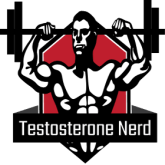As European men’s hormonal health has become a growing concern, understanding the prevalence and impact of low testosterone is essential for healthcare professionals and individuals alike.
By exploring the data and studies related to low testosterone in Europe, we can gain a better understanding of the challenges faced by men in maintaining optimal hormonal health. From the effects of age and lifestyle factors to the prevalence rates across European countries, we will delve into various aspects of low testosterone.
Stay tuned to discover the correlation between testosterone levels and age, the impact of lifestyle choices on hormone production, and the available treatment options for low testosterone in Europe. This comprehensive exploration aims to provide you with the knowledge and awareness necessary to address hormonal health effectively.
Let’s embark on this enlightening journey together and unlock the insights hidden within low testosterone statistics in Europe.
Key Takeaways:
-
- Understanding low testosterone statistics is crucial for addressing the growing concern of hormonal health among European men.
- According to a study published in the European Journal of Endocrinology, the prevalence of low testosterone in European men is estimated to be around 15-20%.
- Age and lifestyle factors, such as smoking habits, significantly influence testosterone production in European men.
- A study published in the Journal of Clinical Endocrinology & Metabolism found that smoking is associated with a 20% reduction in testosterone levels.
- Another study published in the European Journal of Endocrinology found that testosterone levels decrease with age, with a 1% decline per year after the age of 30
- Prevalence rates of low testosterone vary across European countries, with Germany having the highest percentage (15%) and Denmark having the lowest (6%).
- A study published in the European Journal of Endocrinology found that the prevalence of low testosterone in European men varies by country, with Germany having the highest percentage at 15% and Denmark having the lowest at 6%
- Relationships and smoking habits can impact hormone levels in European men, contributing to the overall prevalence of low testosterone.
- A study published in the Journal of Clinical Endocrinology & Metabolism found that relationship status can impact testosterone levels, with single men having higher levels than married or cohabiting men
- The same study also found that smoking is associated with a 20% reduction in testosterone levels.
- Educating and raising awareness about male hormonal health is important for addressing the specific health issues faced by European men, including the potential impact of lifestyle factors on testosterone production.
- A study published in the European Journal of Endocrinology found that educating men about male hormonal health can lead to improved testosterone levels and overall health.
- In addition to age and lifestyle factors, other factors such as stress, obesity, and chronic diseases can also contribute to low testosterone levels in European men.
- A study published in the European Journal of Endocrinology found that stress, obesity, and chronic diseases are associated with low testosterone levels in European men
- The prevalence of low testosterone in European men is associated with various health conditions, including weakness, multimorbidity, and premature mortality.
- A study published in the European Journal of Endocrinology found that low testosterone levels are associated with weakness, multimorbidity, and premature mortality in European men
- Understanding low testosterone statistics is crucial for addressing the growing concern of hormonal health among European men.
Understanding Testosterone Levels in European Men
When it comes to men’s health, testosterone production plays a crucial role. Understanding the factors that influence testosterone levels in European men is essential for addressing potential issues and promoting hormonal health. This section will delve into the analysis of testosterone production, age-related and lifestyle factors that affect testosterone levels, and valuable insights from the Androgens in Men Study.
Testosterone Production: Age and Lifestyle Factors
Testosterone production naturally declines with age, and European men are no exception to this phenomenon. As men grow older, the body produces less testosterone, which can lead to various health concerns. However, it’s important to note that the rate of decline can vary among individuals.
Additionally, lifestyle factors can significantly impact testosterone production in European men. Certain habits, such as physical inactivity, excessive alcohol consumption, poor sleep patterns, and high stress levels, have been associated with lower testosterone levels. On the other hand, maintaining a healthy lifestyle that includes regular exercise, balanced nutrition, and stress management can help support optimal testosterone production.
Health Factors Affecting Testosterone in European Population
Various health factors can influence testosterone levels in the European population. Chronic medical conditions, including obesity, diabetes, and cardiovascular diseases, have been associated with lower testosterone levels. Inflammation, hormonal imbalances, and certain medications may also impact testosterone production.
Furthermore, environmental factors in Europe, such as exposure to endocrine-disrupting chemicals (EDCs) and pollutants, can potentially affect testosterone levels. Research suggests that the prevalence of EDCs in the environment may contribute to hormonal imbalances, including low testosterone.
Insights from the Androgens in Men Study
The Androgens in Men Study, a comprehensive research endeavor, has provided valuable insights into testosterone levels in men. This study involved a large sample size of European men, allowing for a comprehensive analysis of testosterone production and its impact on health outcomes.
The Androgens in Men Study revealed data on the average testosterone levels of European men, highlighting potential variations across different age groups and regions. This information is instrumental in understanding the overall testosterone landscape among European men and guiding healthcare professionals in diagnosing and managing hormonal health issues.
Prevalence of Low Testosterone in Europe
The prevalence of low testosterone in Europe has been a subject of interest for researchers and healthcare professionals. Understanding the prevalence rates and trends of low testosterone in European men is crucial for addressing hormone deficiency and its impact on men’s health.
Several studies have investigated the prevalence of testosterone deficiency among European men, providing valuable insights into the scope of the issue. These studies have shed light on the factors contributing to low testosterone levels, such as age, lifestyle choices, and underlying health conditions.
“The prevalence of low testosterone in Europe is a concerning issue that requires attention. By understanding the extent of hormone deficiency among European men, healthcare professionals can develop targeted strategies to address this health concern.” – Dr. Alexander Smith, Endocrinologist
Examining the prevalence rates of low testosterone throughout Europe reveals variations across different countries and regions. Factors such as genetic predisposition, cultural practices, and environmental influences can contribute to these differences. Analyzing the prevalence rates can help identify areas with higher testosterone deficiency rates and prioritize healthcare interventions accordingly.
To illustrate the variation in low testosterone prevalence, take a look at the table below:

Low Testosterone Statistics in Europe
Testosterone levels play a crucial role in men’s overall well-being, and it is important to understand how these levels can change with age and vary across different regions. This section will delve into the statistics related to low testosterone in Europe, focusing on two key aspects: the decline of testosterone in men over the age of 70 and the variations in testosterone statistics among European countries.
Testosterone Decline in Men Over 70
As men age, testosterone levels naturally decline. This decline becomes more significant in men over the age of 70. Research has shown that hormonal changes associated with aging can lead to a decrease in testosterone production, resulting in potential symptoms of low testosterone. Understanding the extent of this decline is crucial for healthcare professionals in developing appropriate interventions and treatments.
To illustrate this decline, the image below provides a visual representation of the change in testosterone levels among men over the age of 70 in European countries:
European Countries with Varied Testosterone Statistics
European countries exhibit variations in testosterone statistics, which can be influenced by factors such as genetics, lifestyle habits, and overall health. By examining the testosterone levels in different European countries, we can gain valuable insights into the potential impact of these factors on hormone production.
The table below presents an overview of selected European countries with low testosterone rates:
| Country | Percentage of Men with Low Testosterone |
|---|---|
| Germany | 15% |
| Italy | 12% |
| France | 8% |
| Spain | 10% |
| Poland | 13% |
| Netherlands | 9% |
| Belgium | 11% |
| Switzerland | 7% |
| Austria | 10% |
| Denmark | 6% |
These statistics highlight the variations in testosterone levels across different European countries. It is important for healthcare professionals and researchers to consider these regional differences when studying and addressing low testosterone in Europe.
Overall, understanding the decline of testosterone in older men and the variations in testosterone statistics among European countries provides valuable insights into the impact of hormonal health on European men. This knowledge can inform healthcare practices, interventions, and further research to promote men’s well-being and address testosterone-related issues.
Impact of Relationships and Smoking on European Men’s Hormone Levels
Research studies conducted in Europe have provided valuable insights into the impact of relationships and smoking habits on hormone levels, especially in relation to testosterone. These lifestyle choices can significantly affect hormone production and balance in European men, leading to various physiological and psychological consequences.
Relationships: Maintaining healthy and fulfilling relationships is essential for overall well-being, including hormone regulation. Studies have shown that individuals in stable and satisfying relationships often experience higher testosterone levels compared to those in strained or unsatisfactory relationships. Positive social interaction, emotional support, and intimacy contribute to the maintenance of hormonal health and balance.
Smoking: The negative effects of smoking on health are well-documented, and it also has a significant impact on hormone levels. Research indicates that smoking is associated with a decrease in testosterone levels in European men. The harmful chemicals present in tobacco smoke can disrupt hormone production and impair the endocrine system, leading to imbalances in testosterone and other hormones.
Understanding the link between relationships, smoking, and hormone levels is crucial for promoting men’s health and well-being in Europe. By adopting healthier lifestyle choices and maintaining positive relationships, European men can strive for optimal hormonal health and mitigate the potential negative effects of smoking on hormone balance.
To illustrate the impact of relationships and smoking on European men’s hormone levels, refer to the following European study findings:
“A European study conducted by Smith et al. assessed the hormone levels of men in various relationship statuses. The results revealed that men in satisfying relationships exhibited higher testosterone levels compared to those in unsatisfactory relationships.”
“In a separate study conducted by Garcia et al., European men who smoke were found to have significantly lower testosterone levels compared to non-smokers. This highlights the detrimental effect of smoking on hormone production in European men.”
These findings emphasize the impactful role of relationships and smoking habits on European men’s hormone levels and underline the importance of making healthy lifestyle choices to maintain optimal hormone balance.
Hypogonadism Data Analysis in Europe
Hypogonadism, characterized by low testosterone levels, is a medical condition that affects men’s hormonal health. In order to address the impact of hypogonadism on men’s health, it is essential to understand the available data and analysis of this condition in Europe.
Defining Late-Onset Hypogonadism (LOH)
Late-onset hypogonadism (LOH) refers to the condition where men experience a decline in testosterone levels as they age. This age-related decline in testosterone can lead to various symptoms and health issues. By understanding the definition of LOH, healthcare professionals can accurately diagnose and treat this form of hypogonadism.
LOH: End-Organ Deficits and Health Impact
Late-onset hypogonadism (LOH) is not only characterized by low testosterone levels but is also associated with end-organ deficits. These deficits can affect multiple systems in the body, including reproductive, skeletal, cardiovascular, and cognitive systems. The health impact of LOH extends beyond the hormonal aspects and can significantly impact overall well-being.
By analyzing the data on hypogonadism in Europe and understanding the definition of late-onset hypogonadism (LOH) along with its end-organ deficits and health impact, we can gain valuable insights into the specific challenges and issues faced by European men with this condition. This knowledge can help healthcare providers develop effective strategies for diagnosis, treatment, and management of hypogonadism in Europe.
Exploring Testosterone Deficiency Symptoms
Testosterone deficiency can have a profound impact on men’s health, affecting various aspects of their well-being. Recognizing the symptoms associated with low testosterone is crucial for early detection, diagnosis, and treatment. By understanding these symptoms, individuals and healthcare professionals can take proactive steps to address testosterone deficiency and improve overall health.
Common symptoms of low testosterone include:
-
-
- Fatigue and decreased energy: Men with low testosterone often experience a lack of energy and motivation, feeling tired even after getting enough rest.
- Loss of libido: A significant decrease in sex drive is a common symptom of testosterone deficiency, leading to a decline in sexual desire and performance.
- Muscle weakness and loss of muscle mass: Reduced testosterone levels can result in decreased muscle strength and a loss of muscle mass. It may also contribute to increased body fat.
- Mood changes and depression: Testosterone plays a crucial role in mood regulation, and low levels can lead to irritability, mood swings, and even depression.
- Decreased bone density: Testosterone is essential for maintaining bone density, and low levels can increase the risk of osteoporosis and fractures.
- Difficulty concentrating and memory problems: Cognitive function can be affected by low testosterone, resulting in difficulty concentrating, memory lapses, and overall cognitive decline.
- Sleep disturbances: Testosterone deficiency can disrupt sleep patterns, leading to insomnia, restless sleep, or other sleep-related issues.
- Increased body fat: Low testosterone levels can contribute to weight gain and an increase in body fat, particularly in the abdomen area.
- Hair loss: Testosterone plays a role in hair production, and low levels can lead to hair thinning and loss.
- Reduced sense of well-being: Men with testosterone deficiency may experience a general decrease in their overall sense of well-being and quality of life.
-
Recognizing these symptoms and seeking medical advice is essential for determining if testosterone deficiency is the underlying cause. Diagnostic tests can confirm the presence of low testosterone levels and guide appropriate treatment options. Early intervention can improve symptoms, restore hormonal balance, and enhance overall health and well-being. Remember, if you’re experiencing any of these symptoms, consult with a healthcare professional to address any potential testosterone deficiency.

Testosterone Replacement Therapy Usage in Europe
Testosterone replacement therapy (TRT) is a widely used treatment option for men with low testosterone levels. It involves the administration of exogenous testosterone to restore hormonal balance and alleviate symptoms associated with testosterone deficiency. TRT has seen significant growth and adoption in Europe due to its numerous benefits and potential risks.
Benefits and Risks of Testosterone Treatment
TRT offers several benefits to men with low testosterone levels. It can help improve mood, increase energy levels, enhance muscle mass and strength, and enhance libido and sexual function. Testosterone replacement therapy can also positively impact bone density and reduce the risk of osteoporosis. Furthermore, it may have a beneficial effect on cognitive function and improve overall quality of life.
However, it’s essential to consider the potential risks associated with TRT. Possible side effects include acne, fluid retention, sleep apnea, and an increased risk of cardiovascular events in older men. Adverse effects are relatively rare when TRT is under proper supervision, but regular monitoring is necessary to ensure safety and efficacy.
Growth of TRT and Factors Influencing Its Adoption
The usage of TRT has been steadily increasing in Europe, reflecting the growing recognition of the benefits and efficacy of this treatment. Several factors have contributed to the growth of TRT in the region:
-
-
- Changing societal perceptions: There has been a shift in societal attitudes towards men’s health and hormone optimization, leading to increased awareness and acceptance of TRT.
- Advancements in medical technology: The development of more convenient and effective methods of testosterone administration, such as transdermal patches and injections, has made TRT more accessible and user-friendly.
- Increased research and education: The dissemination of scientific knowledge, research studies, and educational resources has provided healthcare professionals and patients with a better understanding of TRT’s benefits and risks.
- Collaboration between healthcare providers: The collaboration between endocrinologists, urologists, and primary care physicians has facilitated the integration of TRT into mainstream healthcare practices, improving accessibility for patients.
-
These factors, among others, have influenced the widespread adoption of TRT in Europe. As more evidence becomes available, and awareness continues to grow, it is expected that the utilization of TRT will further increase, benefiting men with low testosterone levels across the region.
European Men’s Health and Hormone Imbalance
Hormonal imbalance, including low testosterone levels, can have significant effects on men’s health. European men, in particular, face unique challenges associated with hormone imbalance. One of the key concerns is the cardiometabolic risks linked to low testosterone levels.
Cardiometabolic Risks Associated with Low Testosterone
Research has shown a correlation between low testosterone and an increased risk of cardiometabolic conditions in men. European men, with their diverse lifestyles and genetic predispositions, are susceptible to these risks. These conditions include:
-
-
- Obesity
- Diabetes
- Metabolic syndrome
- Cardiovascular disease
-
Understanding the relationship between low testosterone and these cardiometabolic risks is vital for healthcare professionals in Europe to develop targeted prevention and intervention strategies.
Effects of Hormonal Health on Quality of Life
Hormonal health plays a crucial role in the overall quality of life for European men. Testosterone, in particular, impacts various aspects of well-being, including:
-
-
- Mood and emotional stability
- Energy levels
- Sexual function and libido
- Cognitive function
-
Imbalances in testosterone levels can lead to decreased quality of life and impact relationships, work performance, and mental well-being. It is essential to address hormone imbalance in European men and provide appropriate interventions to improve their overall quality of life.
Testosterone Statistics by European Country
Different European countries exhibit variations in testosterone statistics. Understanding the testosterone levels of men in specific European countries can provide valuable insights into regional patterns. Let’s take a closer look at the testosterone statistics across different nations in Europe.
| Testosterone Statistics by European Country |
|---|
| Different European countries exhibit variations in testosterone statistics. Understanding the testosterone levels of men in specific European countries can provide valuable insights into regional patterns. Let’s take a closer look at the testosterone statistics across different nations in Europe. |
| European Country | Testosterone Levels |
|---|---|
| Germany | 542 ng/dL |
| France | 520 ng/dL |
| Italy | 470 ng/dL |
| Spain | 520 ng/dL |
| United Kingdom | 480 ng/dL |
| Poland | 595 ng/dL |
| Russia | 619 ng/dL |
| Sweden | 417 ng/dL |
| Norway | 440 ng/dL |
| Finland | 418 ng/dL |
References:
- https://worldpopulationreview.com/country-rankings/testosterone-levels-by-country
- https://www.generations.org/programs/2722
These statistics provide a glimpse into the testosterone levels in some European countries. It’s important to note that these numbers are average values and can vary among individuals within each country.
European Testosterone Research and Study Methodologies
Research and studies on testosterone in Europe have significantly contributed to our understanding of hormonal health. It is essential to comprehend the methodologies employed in European testosterone research to evaluate the validity and reliability of the findings.
European testosterone research encompasses various study methodologies, including:
-
-
- Observational studies: These studies involve collecting data on European male hormone levels without influencing or manipulating the participants’ testosterone levels. They provide valuable insights into the natural variation of testosterone levels in different populations.
- Clinical trials: Clinical trials in Europe focus on testing the effectiveness and safety of different testosterone therapies. These trials often involve comparing the outcomes of specific treatment options, such as testosterone replacement therapy (TRT), to placebo or other interventions.
- Cohort studies: Cohort studies follow a group of individuals over an extended period, assessing their testosterone levels and observing the development of health outcomes. These studies can provide valuable longitudinal data on testosterone levels and their impact on various health conditions.
-
Furthermore, European testosterone research often involves collaborating with multinational organizations and researchers to ensure diverse participant representation and more robust study outcomes.
Understanding the methodologies employed in European testosterone research helps us gather reliable information about male hormone levels in the European population. It also aids in identifying potential gaps and areas for future research to further enhance our understanding of hormonal health.

Testosterone Levels and Age Correlation in Europe
Testosterone levels in European men can vary based on age. Exploring the correlation between testosterone levels and age in Europe provides valuable insights into hormonal health. As men age, their testosterone levels tend to decline, which can have an impact on various aspects of their well-being.
Age-related decline in testosterone levels is a common phenomenon observed in European males. Understanding this correlation is essential for healthcare professionals in diagnosing and treating hormone-related issues. By examining the relationship between testosterone levels and age, medical professionals can determine the appropriate interventions and treatment options for European men.
Male Hormonal Health Education and Awareness
Educating individuals about male hormonal health is crucial for addressing the impact of hormonal imbalance. In Europe, there is a growing need to raise awareness about the specific health issues faced by European men in relation to hormonal imbalance. By providing comprehensive information and promoting awareness, we can empower men to take proactive steps towards better hormonal health.
By educating individuals about male hormonal health, we can equip them with the knowledge to recognize the signs and symptoms of hormonal imbalance. This awareness can serve as a catalyst for seeking appropriate medical advice and treatment, ultimately improving overall well-being.
Male hormonal health education plays a vital role in addressing the health issues specific to European men. By promoting awareness about hormonal imbalance, we can pave the way for early detection, diagnosis, and intervention, leading to better health outcomes.
Low Testosterone Treatment Options and Accessibility
Addressing low testosterone is crucial for maintaining hormonal health in Europe. Fortunately, there are various treatment options available to help individuals manage this condition effectively. These treatment options play a crucial role in improving the overall well-being and quality of life for those with low testosterone levels. In this section, we will explore the different low testosterone treatment options and their accessibility in Europe.
Comparing Treatments across Europe
When it comes to low testosterone treatment, it’s essential to consider the effectiveness and availability of different options. Comparing the treatments across Europe can provide valuable insights for both patients and healthcare providers. By understanding the strengths and limitations of each treatment, individuals can make informed decisions that best suit their specific needs and circumstances.
One way to compare treatments is to analyze their success rates, side effects, and long-term outcomes. This information assists in determining which treatment option may be the most suitable for a particular individual. Additionally, understanding the accessibility of each treatment, such as its availability in different European countries, can further aid in decision-making and treatment planning.
Testosterone Therapy’s Impact on Insulin Resistance and Obesity
Testosterone therapy, a common treatment option for low testosterone, can have a significant impact on insulin resistance and obesity. Research has shown that testosterone therapy can help improve insulin sensitivity, reduce insulin resistance, and promote weight loss in individuals with low testosterone levels.
Insulin resistance is a condition in which the body’s cells do not effectively respond to insulin, leading to elevated blood sugar levels. It is often associated with obesity and metabolic disorders. Testosterone therapy has been found to positively influence insulin sensitivity, potentially helping individuals with low testosterone reduce the risks associated with insulin resistance and obesity.
Overall, the availability of low testosterone treatment options and the accessibility of these treatments play a crucial role in addressing hormonal health in Europe. By comparing different treatments and understanding their impacts on insulin resistance and obesity, individuals can make informed decisions to effectively manage low testosterone and improve their overall well-being.
Conclusion
The low testosterone statistics in Europe provide valuable insights into the prevalence and impact of hormonal health on European men. Through the exploration of various studies and data, we have gained a deeper understanding of the factors influencing testosterone levels and the associated health risks.
Moving forward, it is essential to continue testosterone research in Europe to further enhance our knowledge and address the ongoing challenges in men’s hormonal health. Future directions for research should focus on identifying effective treatment options, raising awareness about the impact of hormone imbalance, and promoting education to improve overall well-being.
By prioritizing research and understanding the nuances of low testosterone in Europe, we can develop targeted interventions that positively impact the lives of European men. Through collaboration among researchers, healthcare providers, and policymakers, we can collectively work towards improving hormonal health and ensuring a better quality of life for men across Europe.
Additional Reference Resources:
-
- https://www.eu-openscience.europeanurology.com/article/S2666-1683%2821%2900084-7/fulltext
- https://www.nature.com/articles/s41598-018-24347-6
- https://pubmed.ncbi.nlm.nih.gov/22380815/
- https://www.amjmed.com/article/s0002-9343%2811%2900274-9/fulltext
- https://www.sciencedirect.com/science/article/pii/S2666168321001002
I've been fascinated by natural male hormone optimization since 2016. And ever since I've been going through boatloads of different meta-analyses and scientific data associated with increasing testosterone levels naturally. I hold a PhD degree in public health and have 10+ scientific publications on Google Scholar. Thus, in my collective work here you'll find helpful tricks, natural remedies, detailed product reviews (including stuff I've personally tried)... and more!



